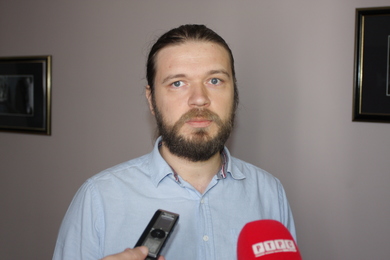Associate Professor Rakić – a part of the largest space exploration project
University of Banja LukaGeneral-An Associate Professor at the Faculty of Mathematics and Natural Sciences of the University of Banja Luka, Prof. Nemanja Rakić, PhD, will be a part of a large international team in one of the most ambitious scientific projects of space research nowadays, which will be led by scientists of “Vera Rubin” observatory in Chile, in the next ten years.
This project, which has already received several billion dollars in investment, includes working on the most modern telescope located in the Andes, in one of the most suitable locations in the world for observing space. The goal is systematic and continual observing of the skies, which could lead to revolutionary findings, from new facts about the Solar system to monitoring potential threats from space and searching for the mysterious ninth planet.
“We cannot even imagine the quantity of data we shall obtain. We expect new findings about the changes on objects we are going to monitor, which are key for their physical understanding. One of the tasks will be recording all the small objects in the Solar system – asteroids, comets, and meteors – so that we could timely react in case of a possible peril for the Earth”, said Prof. Rakić for the Radio of the Republic of Srpska.
Rakić is the only scientist from the Republic of Srpska and Bosnia and Herzegovina who participates in this global project. The Serbian scientific team, along with the French, was among the first international partners to join the American initiative.
According to the media reporting, the „Rubinˮ observatory and the project „Legacy Survey of Space and Time” are considered revolutionary in astronomical observations. Along with the telescope and its instruments, the Observatory was designed to address several scientific issues simultaneously. A camera of the size and weight of a small car, with a sensor that shoots almost 50 Moon diameters in a single exposure, can detect what is happening in the sky in just 60 seconds and inform the public about the possible changes.
The “Rubin” observatory is a project of the American government, financed by the National Science Foundation and the US Department of Energy, in terms of construction. However, about a decade ago, it became clear that international help would be needed, both in terms of design and construction, as well as for the processing of huge amounts of data. The first international teams that joined in the construction were teams from France and Serbia. Contracts with numerous teams were later signed worldwide, including the team of Prof. Rakić, for the so-called non-material contribution.
The “Rubin” observatory was named after Vera S. Rubin, an American astrophysicist who pioneered in astronomy and scientific research. She discovered, among other things, that stars that are distant from the center of our galaxy move faster than expected according to the valid theories.



